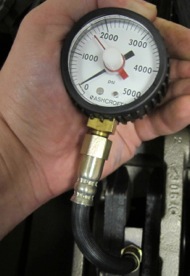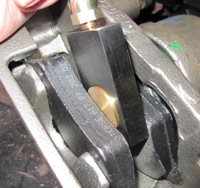
Some technicians tend to throw parts at brake problems, and others throw tools and training. While you might be able to get away with blindly replacing brake boosters, hoses and master cylinders on an older vehicle, just replacing components on newer models may not solve the problem — and it can be cost prohibitive. And don’t forget, you’re also gambling with your reputation. My bet is the “tools and training” approach will be a far more profitable one.
Some of the toughest vehicle components to diagnosis are ABS/ESC Hydraulic Control Units (HCU). Even in a “passive state” the HCU has to keep designated solenoids open or closed to allow the ABS system to be bypassed.
One of the most common failures for HCUs can be dump/isolation valves that are stuck open. This problem can be the most elusive to diagnose. Solenoid valves can remain open due to contaminated brake fluid, rust and sediment. Also, copper from the brazing materials in the hard lines is attracted to the valves and seats of the solenoids.
In some cases, a scan tool with the ability to monitor solenoid actuation can only confirm and test certain functions. Confirming the real-world actions of the HCU is often left to the technician. This is where new tools can help diagnose a vehicle faster.
Recently, I was trying to find the root cause of a brake pull. During “normal” stops when the ABS was passive, it would pull to the right. On wet and gravel surfaces, if the ABS was activated it would stop as straight as an arrow. The car had no codes and the suspension and steering were tight.
Using the Innovative Products of America (IPA) Brake System Analyzer, I observed that one side had 2,000 psi, while the other side barely moved the needle. The IPA Brake System Analyzer is a load cell that fits between the pads and measures the force generated by the calipers. This can directly confirm that there is no pressure being generated in the brake circuit without having to install a pressure gauge and bleeding the system.
Using a vacuum brake bleeder, I was able to pull fluid through the bleeder of the caliper and the level in the reservoir dropped. It had been confirmed there were no restrictions (also confirmed by the ABS stops).
From these tests with the Brake System Analyzer and the bleeder, it was clear that pressure from the master cylinder was not reaching the caliper. It was not the master cylinder, because master cylinders don’t fail for just one wheel.

The only component in the circuit that could cause the condition was the dump/isolation solenoid. It was stuck open. This was confirmed without having to remove the HCU.
The dump/isolation valve opens when the pump is activated or the system wants to isolate a wheel and dump the pressure to get the wheel turning again. It was open at the same time the inlet valve was open, it pushed the fluid into the pump circuit and back into the reservoir.
When the ABS pump is activated, the inlet solenoid closes, the dump/isolation valve opens and the pump is able to direct hydraulic pressure to apply the brakes. Some technicians may not discover this until brake hoses, calipers and other parts have been replaced.
To achieve my diagnosis, it took less than an hour — without a single part thrown at the vehicle. Only caliper bracket bolts were removed and a bleeder was cracked. Easy money.
The Brake System Analyzer comes with two load cells attached to dial gauges, each with a range of 0-5,000 psi (0-350 BAR).
Other uses for the tool include measuring and comparing brake clamping forces.
More than the hydraulic pressure generated by the master cylinder or HCU can influence brake clamping forces. Bracket, hardware and even the pads themselves also influence how hard the pads are able to clamp and release the rotor. This is where the Brake System Analyzer comes into its own.



